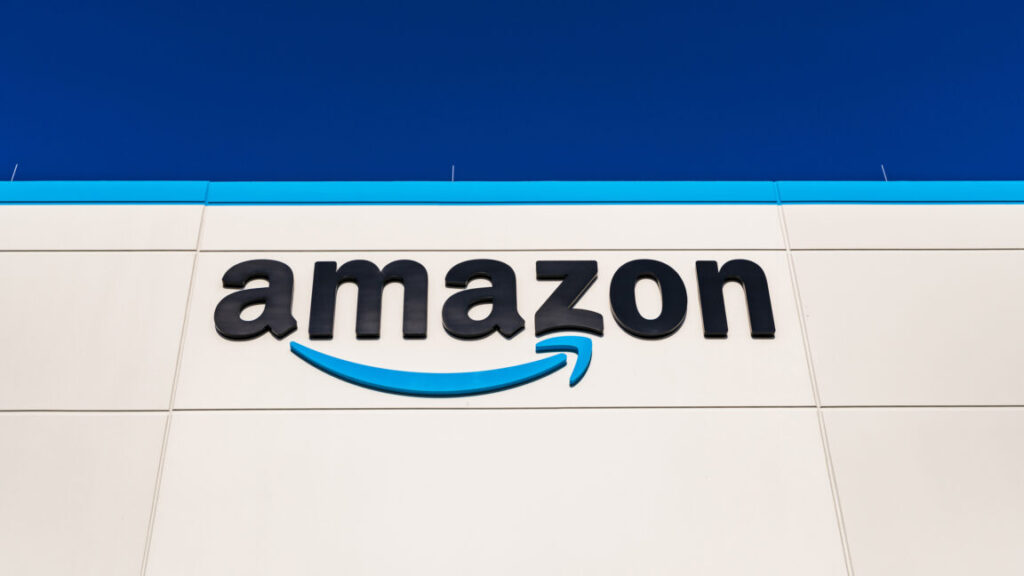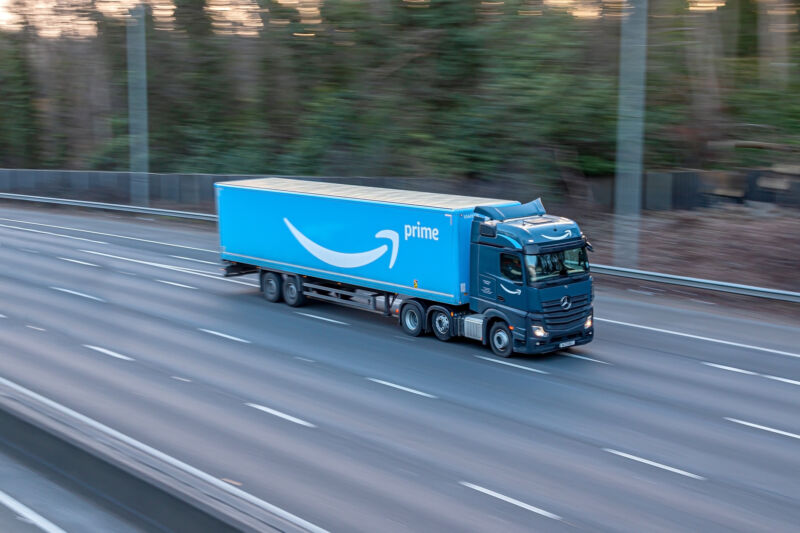Amazon facing strike threats as Senate report details hidden widespread injuries
“Obsessed with speed and productivity”
Amazon ignores strike threats, denies claims of “uniquely dangerous warehouses.”
Just as Amazon warehouse workers are threatening to launch the “first large-scale” unfair labor practices strike at Amazon in US history, Sen. Bernie Sanders (I-Vt.) released a report accusing Amazon of operating “uniquely dangerous warehouses” that allegedly put profits over worker safety.
As chair of the Senate Committee on Health, Education, Labor, and Pensions, Sanders started investigating Amazon in June 2023. His goal was “to uncover why Amazon’s injury rates far exceed those of its competitors and to understand what happens to Amazon workers when they are injured on the job.”
According to Sanders, Amazon “sometimes ignored” the committee’s requests and ultimately only supplied 285 documents requested. The e-commerce giant was mostly only willing to hand over “training materials given to on-site first aid staff,” Sanders noted, rather than “information on how it tracks workers, the quotas it imposes on workers, and the disciplinary actions it takes when workers cannot meet those quotas, internal studies on the connection between speed and injury rates, and the company’s treatment of injured workers.”
To fill in the gaps, Sanders’ team “conducted an exhaustive inquiry,” interviewing nearly 500 workers who provided “more than 1,400 documents, photographs, and videos to support their stories.” And while Amazon’s responses were “extremely limited,” Sanders said that the Committee was also able to uncover internal studies that repeatedly show that “Amazon chose not to act” to address safety risks, allegedly “accepting injuries to its workers as the cost of doing business.”
Perhaps most critically, key findings accuse Amazon of manipulating workplace injury data by “cherry-picking” data instead of confronting the alleged fact that “an analysis of the company’s data shows that Amazon warehouses recorded over 30 percent more injuries than the warehousing industry average in 2023.” The report also alleged that Amazon lied to federal regulators about injury data, discouraged workers from receiving outside care to hide injuries, and terminated injured workers while on approved medical leave.
“This evidence reveals a deeply troubling picture of how one of the largest corporations in the world treats its workforce,” Sanders reported, documenting “a corporate culture obsessed with speed and productivity.”
Amazon disputed Sanders’ report
In a statement, Amazon spokesperson Kelly Nantel disputed the report as “wrong on the facts.”
Sanders’ report allegedly “weaves together out-of-date documents and unverifiable anecdotes to create a pre-conceived narrative that he and his allies have been pushing for the past 18 months,” Nantel said. “The facts are, our expectations for our employees are safe and reasonable—and that was validated both by a judge in Washington after a thorough hearing and by the State’s Board of Industrial Insurance Appeals, which vacated ergonomic citations alleging a hazardous pace of work.”
Nantel said that Sanders ignored that Amazon has made “meaningful progress on safety—improving our recordable incident rates by 28 percent in the US since 2019, and our lost time incident rates (the most serious injuries) by 75 percent.”
But Sanders’ report anticipated this response, alleging that “many” workers “live with severe injuries and permanent disabilities because of the company’s insistence on enforcing grueling productivity quotas and its refusal to adequately care for injured workers.” Sanders said if Amazon had compelling evidence that refuted workers’ claims, the company failed to produce it.
“Although the Committee expects Amazon will dispute the veracity of the evidence those workers provided, Amazon has had eighteen months to offer its own evidence and has refused to do so,” Sanders reported.
Amazon Labor Union preparing to strike
In August, the National Labor Relations Board (NLRB) determined that Amazon is a joint employer of contracted drivers hired to ensure the e-commerce giant delivers its packages when promised. The Amazon Labor Union (ALU)—which nearly unanimously voted to affiliate with the International Brotherhood of Teamsters this summer—considered this a huge win after Amazon had long argued that it had no duty to bargain with driver unions and no responsibility for alleged union busting.
Things seemed to escalate quickly after that, with the NLRB in October alleging that Amazon illegally refused to bargain with the union, which reportedly represents thousands of drivers who are frustrated by what they claim are low wages and dangerous working conditions. As the NLRB continues to seemingly side with workers, Amazon allegedly is “teaming up with Elon Musk in a lawsuit to get the NLRB declared unconstitutional,” workers said in an email campaign reviewed by Ars.
Now, as the holidays approach and on-time deliveries remain Amazon’s top priority, the ALU gave the tech company until Sunday to come to the bargaining table or else “hundreds of workers are prepared to go on strike” at various warehouses. In another email reviewed by Ars, the ALU pushed for donations to support workers ahead of the planned strike.
“It’s one of the busiest times of year for Amazon,” the email said. “The threat of hundreds of workers at one of its busiest warehouses walking out has real power.”
In a statement provided to Ars, Amazon spokesperson Eileen Hards said that Sanders refused to visit Amazon facilities to see working conditions “firsthand” and instead pushed a “pre-conceived narrative” that Amazon claims is unsupported. Her statement also seemed to suggest that Amazon isn’t taking the threat of workers striking seriously, alleging that the ALU also pushes a “false narrative” by supposedly exaggerating the number of workers who have unionized. (Amazon’s full statement disputing Sanders’ claims in-depth is here.)
“For more than a year now, the Teamsters have continued to intentionally mislead the public—claiming that they represent ‘thousands of Amazon employees and drivers,’” Hards said. “They don’t, and this is another attempt to push a false narrative. The truth is that the Teamsters have actively threatened, intimidated, and attempted to coerce Amazon employees and third-party drivers to join them, which is illegal and is the subject of multiple pending unfair labor practice charges against the union.”
Workers seem unlikely to be quieted by such statements, telling Sanders that Amazon allegedly regularly ignores their safety concerns, orders workers to stay in roles causing them pain, denies workers’ medical care, and refuses to accommodate disabilities. Among the support needed for workers preparing to walk out are medical care and legal support, including “worker retaliation defense funds,” the union’s campaign said.
While Amazon seemingly downplays the number of workers reportedly past their breaking point, Sanders alleged that the problem is much more widespread than Amazon admits. According to his report, Amazon workers over “the past seven years” were “nearly twice as likely to be injured as workers in warehouses operated by the rest of the warehousing industry,” and “more than two-thirds of Amazon’s warehouses have injury rates that exceed the industry average.”
Amazon allegedly refuses to accept these estimates, even going so far as repeatedly claiming that “worker injuries were actually the result of workers’ ‘frailty’ and ‘intrinsic likelihood of injury,'” Sanders reported, rather than due to Amazon’s fast-paced quotas.
Laws that could end Amazon’s alleged abuse
On top of changes that Amazon could voluntarily make internally to allegedly improve worker safety, Sanders recommended a range of regulatory actions to force Amazon to end the allegedly abusive practices.
Among solutions is a policy that would require Amazon to disclose worker quotas that allegedly “force workers to move quickly and in ways that cause injuries.” Such transparency is required in some states but could become federal law, if the Warehouse Worker Protection Act passes.
And likely even more impactful, Sanders pushed to pass the Protecting America’s Workers Act (PAWA), which would increase civil monetary penalties for violations of worker safety laws.
In his report, Sanders noted that Amazon is much too big to be held accountable by current maximum penalties for workplace safety violations, which are just over $16,000. Penalties for 50 violations for one two-year period were just $300,000, Sanders said, which was “approximately 1 percent of Amazon CEO Andy Jassy’s total compensation in 2023.”
Passing PAWA would spike the maximum penalty for willful and repeated violations to $700,000 and is necessary, Sanders advocated, to “hold Amazon accountable for its failure to protect its workers.”
Additional legal protections that Congress could pass to protect workers include laws protecting workers’ rights to organize, banning Amazon from disciplining workers based on automated systems allegedly “prone to errors,” and ending Amazon’s alleged spying, partly by limiting worker surveillance.
In his report, Sanders suggested that his findings align with workers’ concerns that have become “the basis of efforts to organize warehouses in New York, Kentucky, Florida, Alabama, Missouri, and beyond.” And as many workers seem ready to strike at Amazon’s busiest time of year, instead of feeling optimistic that Amazon will bargain with workers, they’re bracing for suspected retaliation and planning to hit Amazon where it hurts most—the e-commerce giant’s bottom line.
In an email Monday, the campaign suggested that “Amazon only speaks one language, and that’s money.”
“We’re ready to withhold our labor if they continue to ignore their legal obligation to come to the table,” the email said, noting that when it comes to worker well-being, “our message is clear: We can’t wait anymore.”
Amazon facing strike threats as Senate report details hidden widespread injuries Read More »




